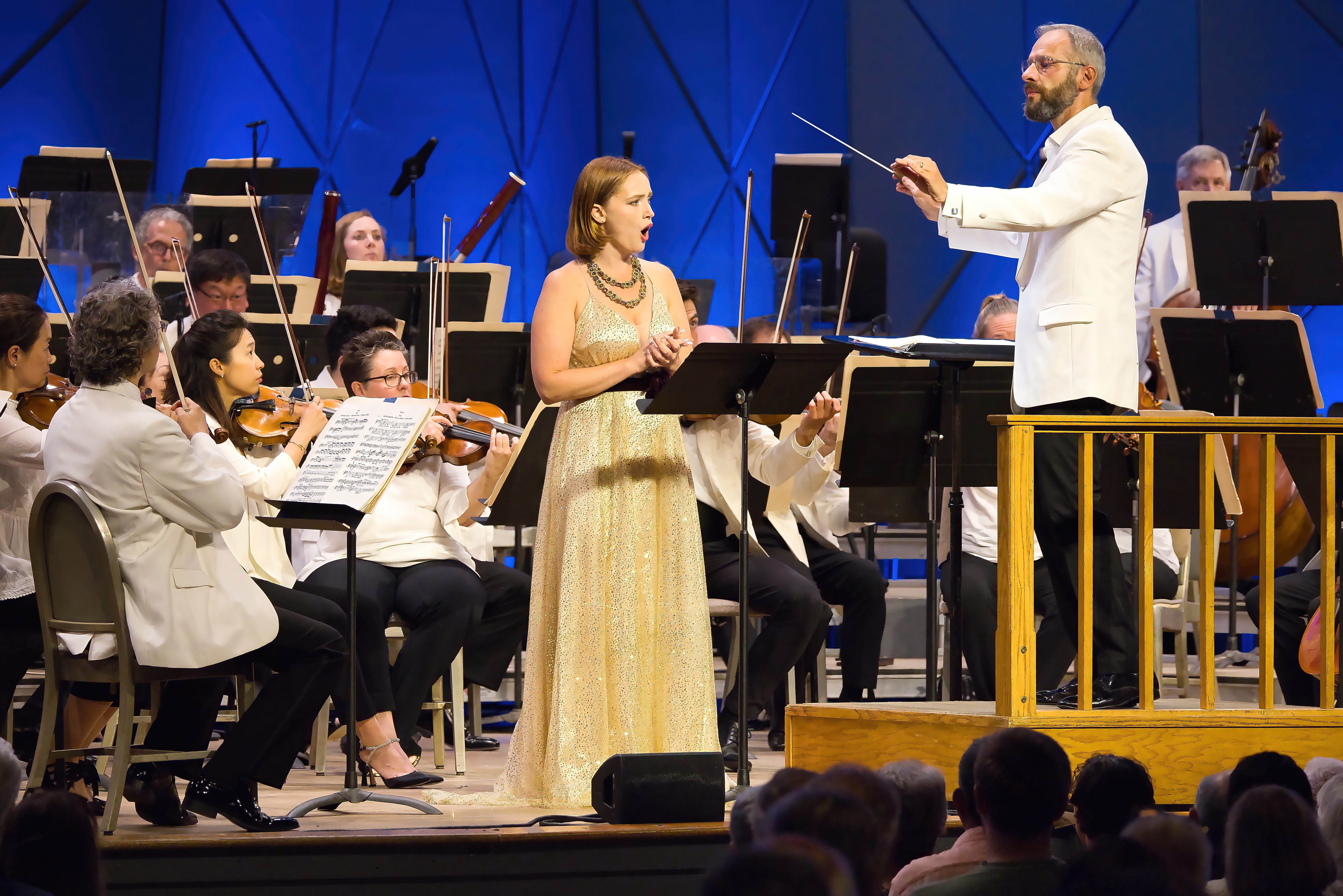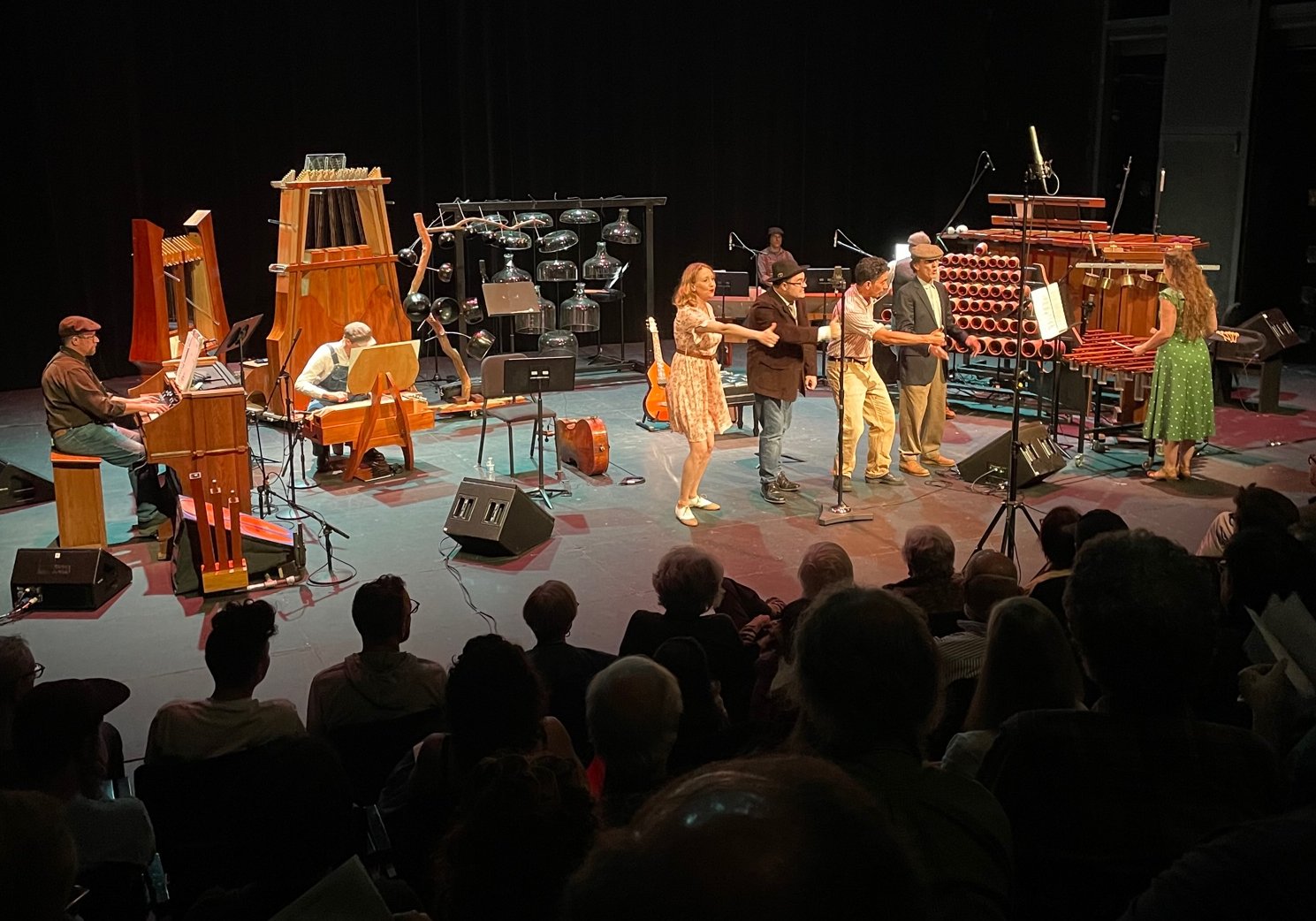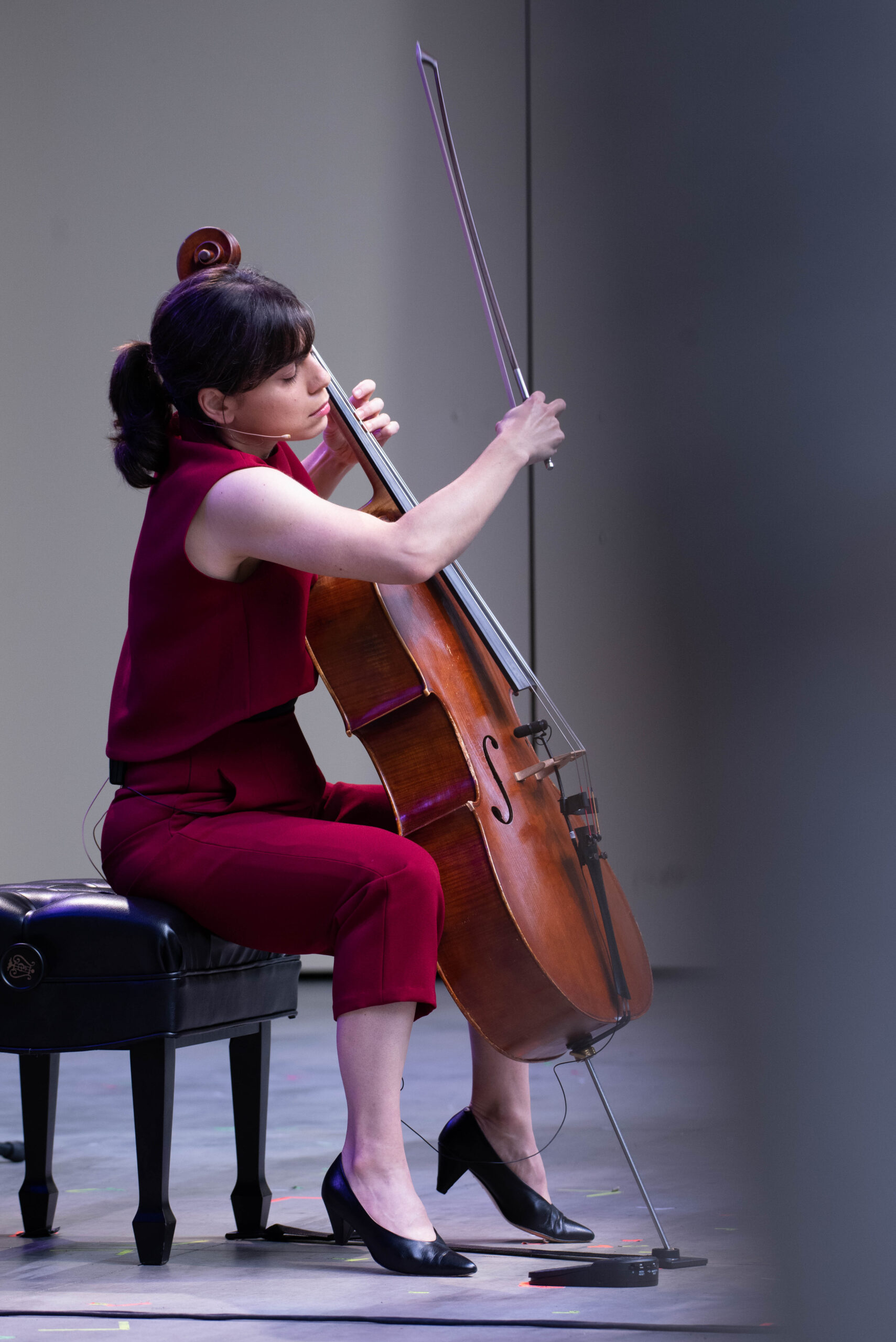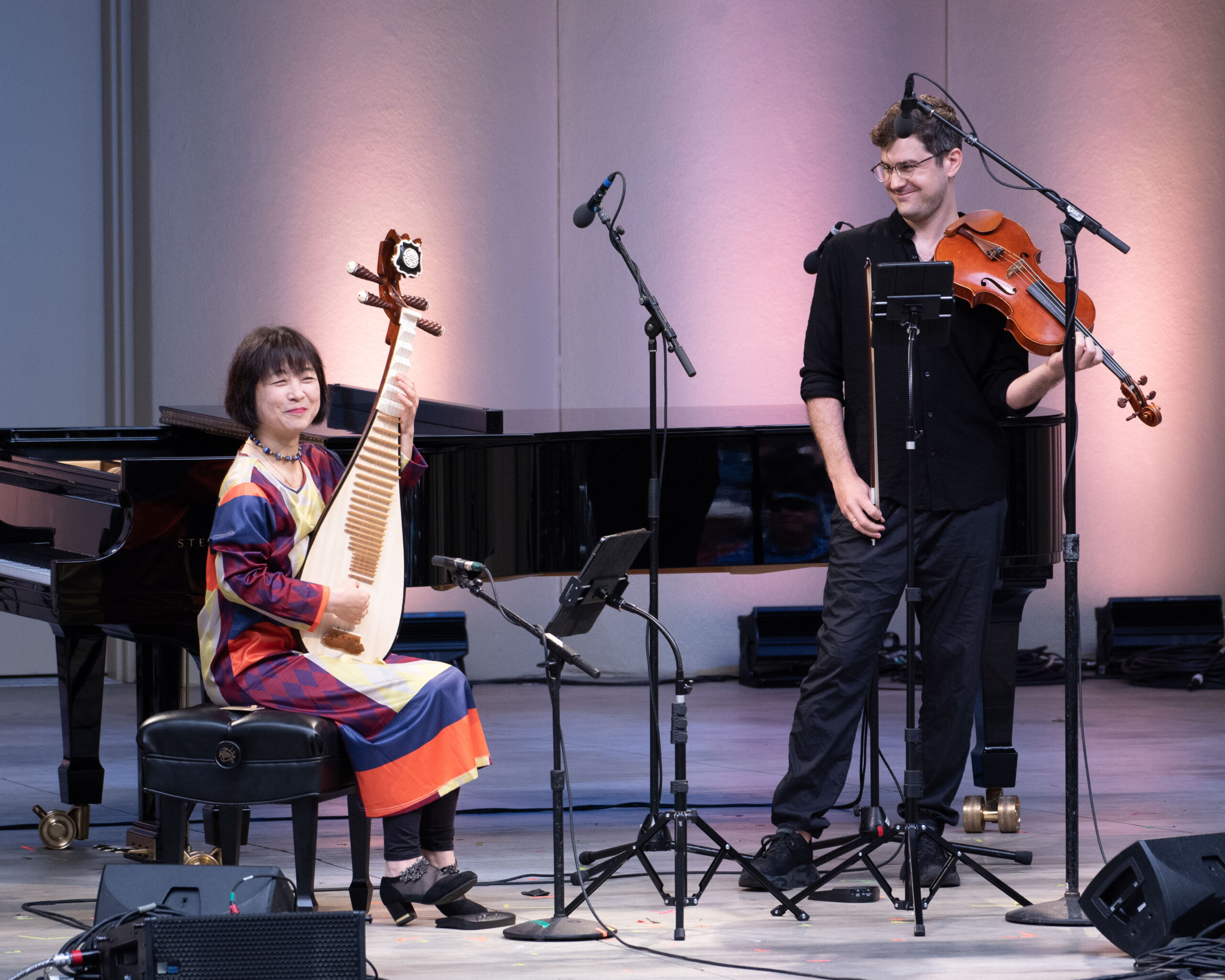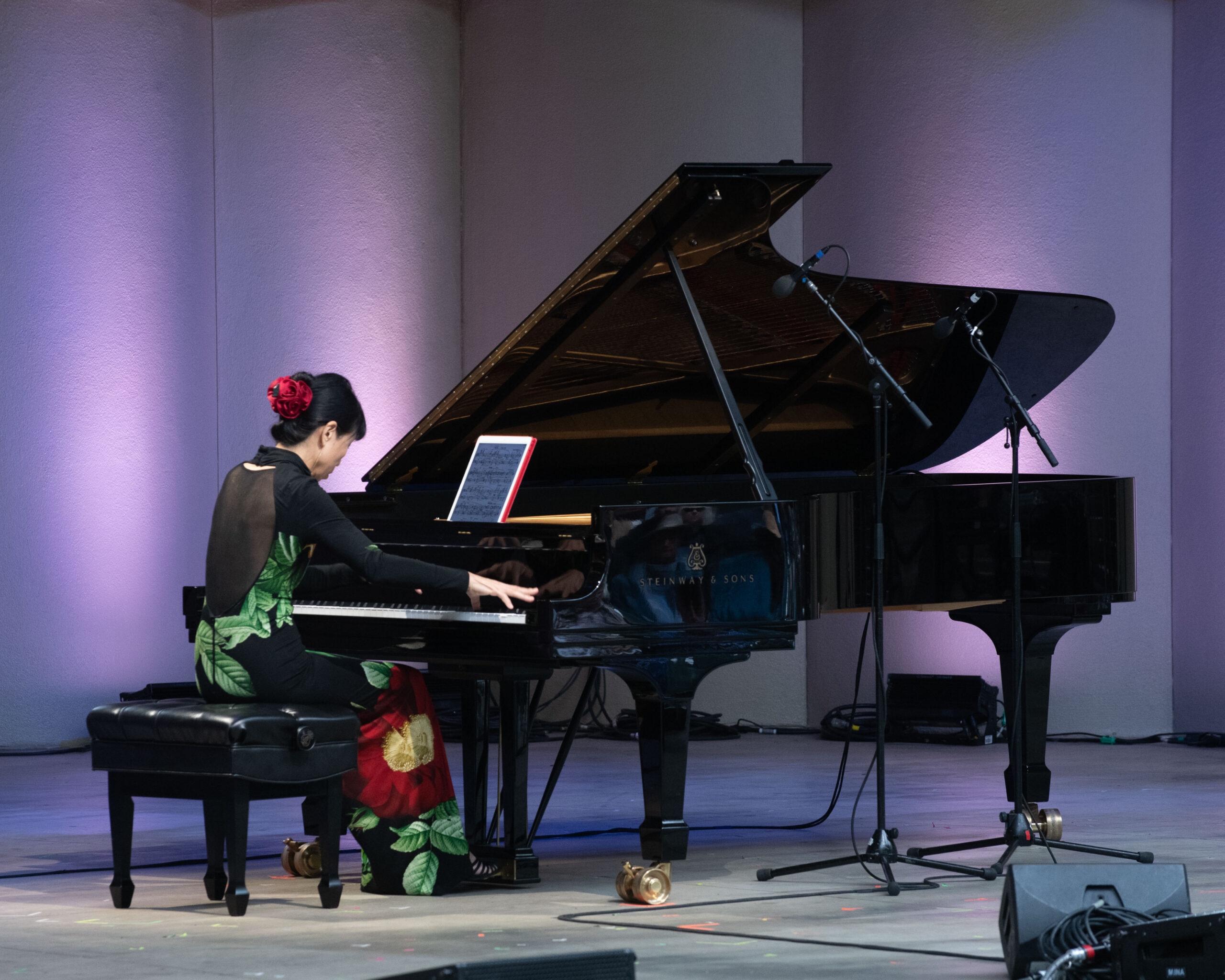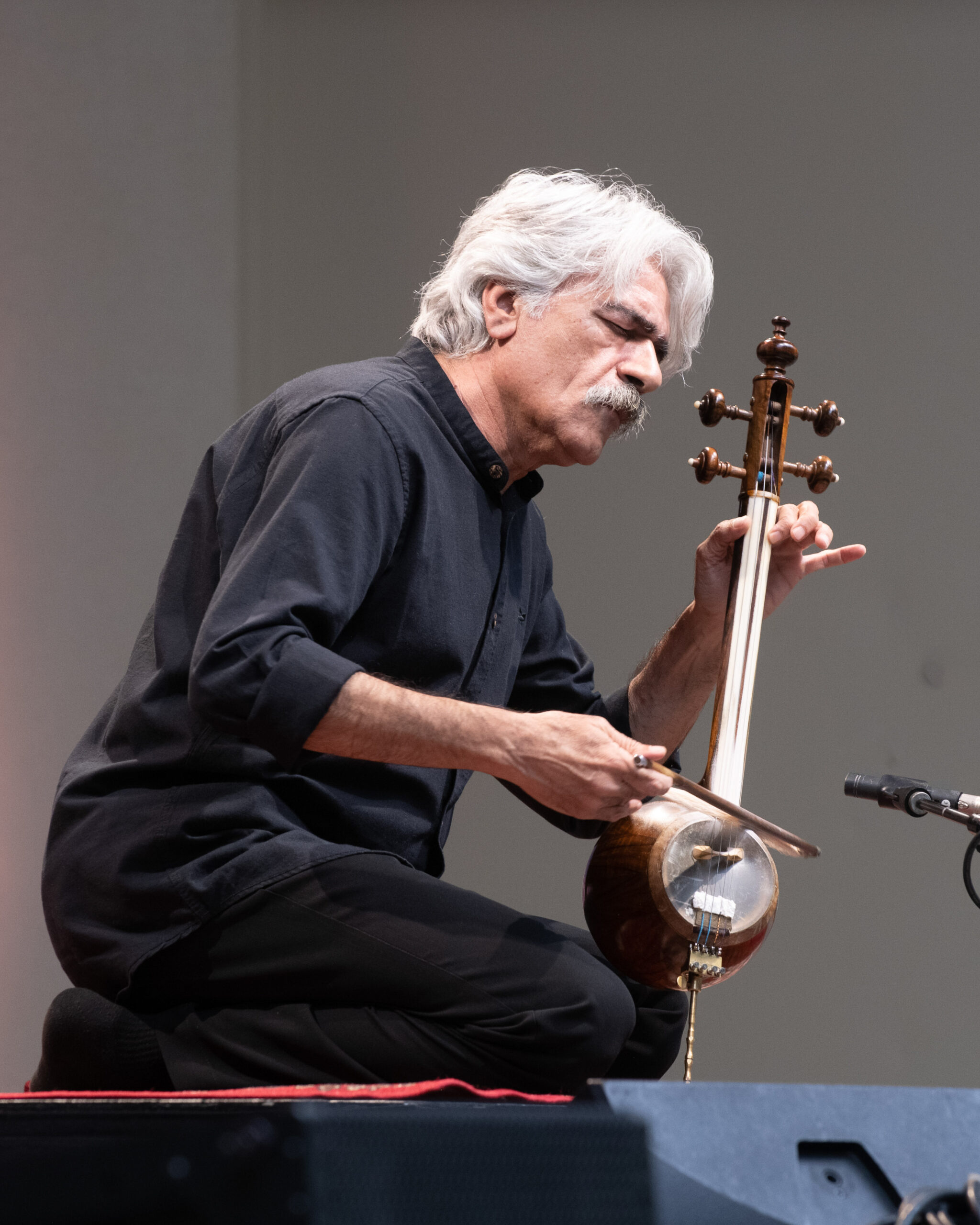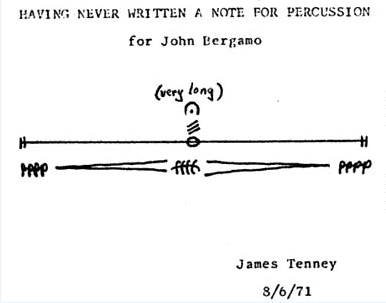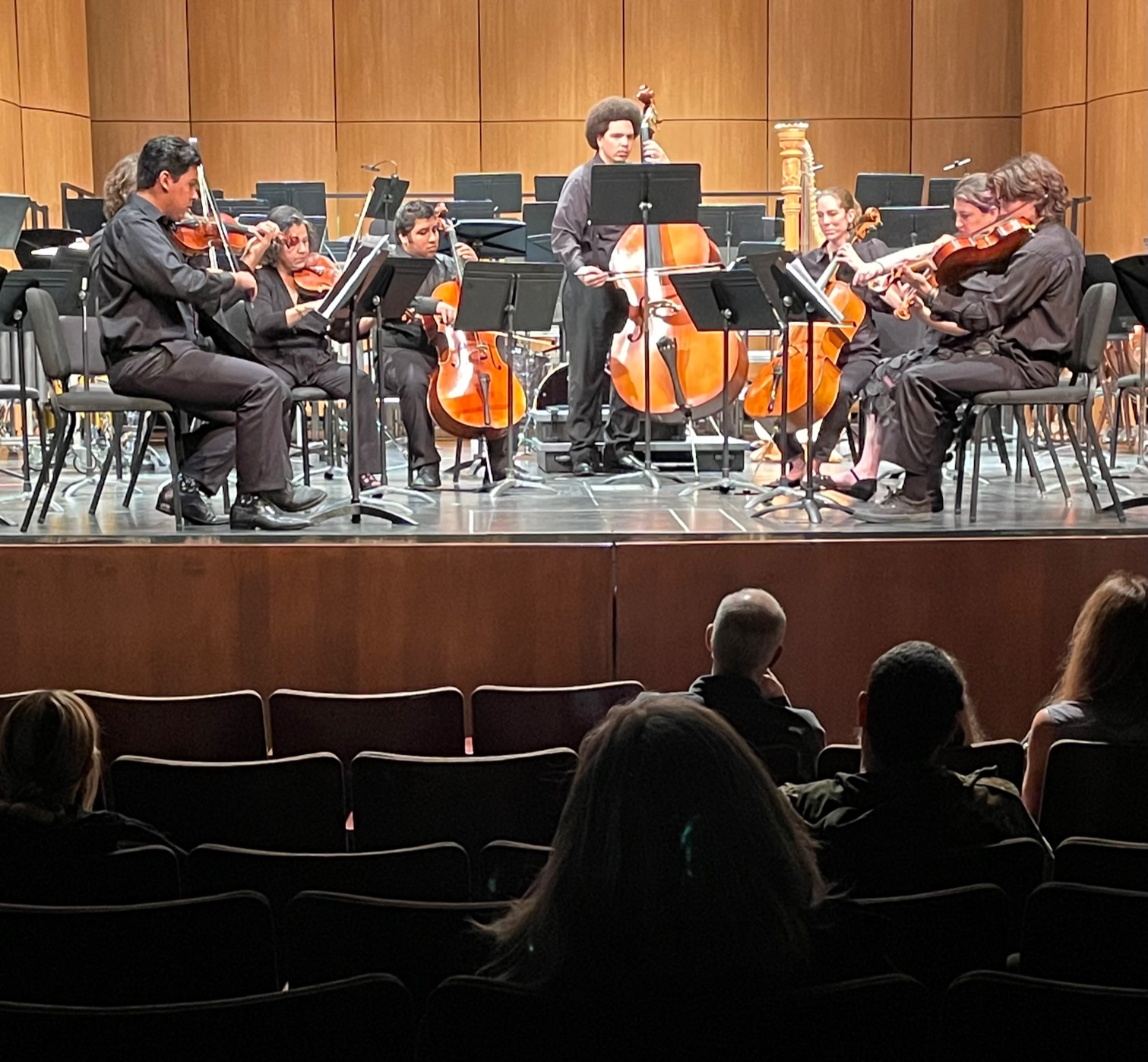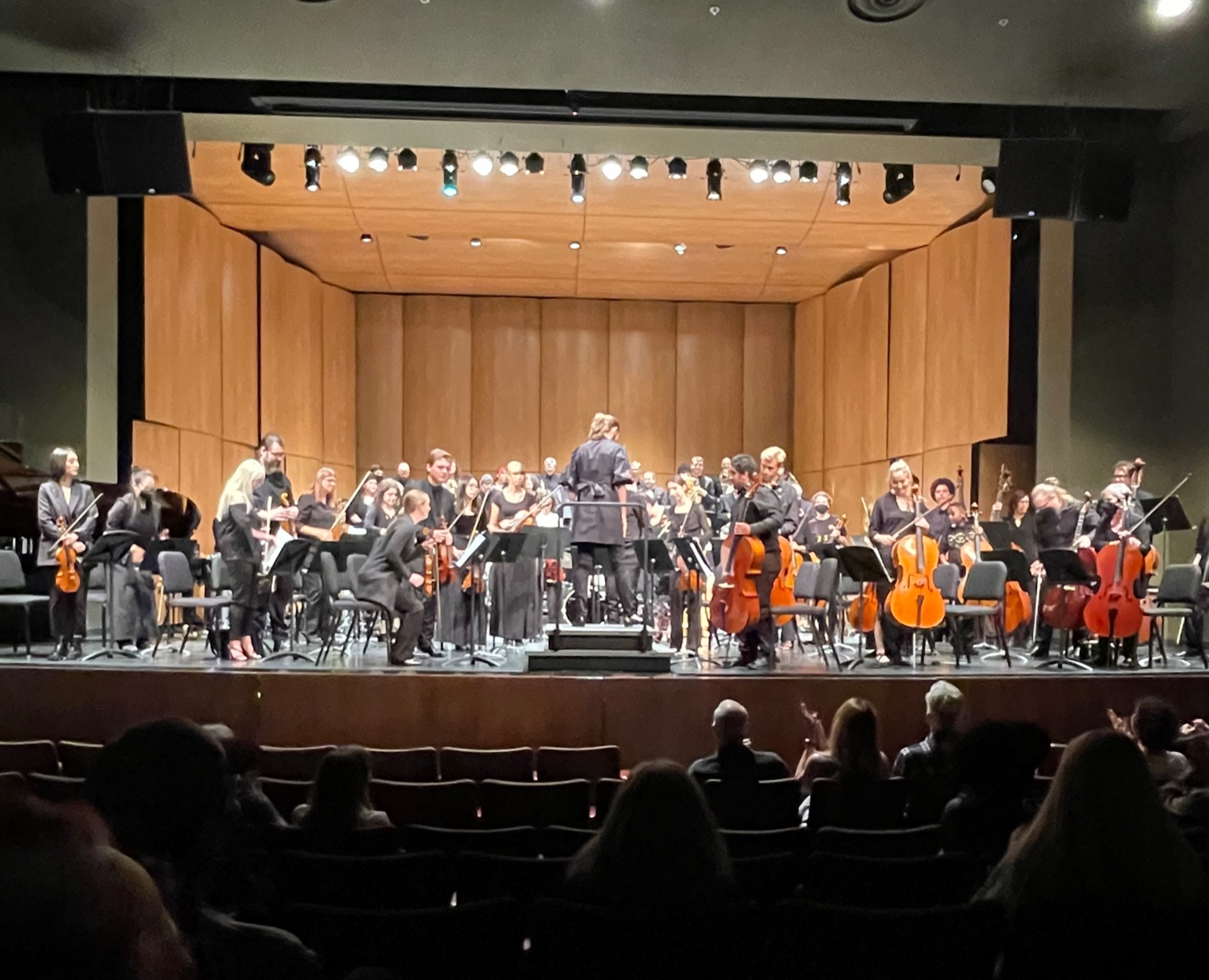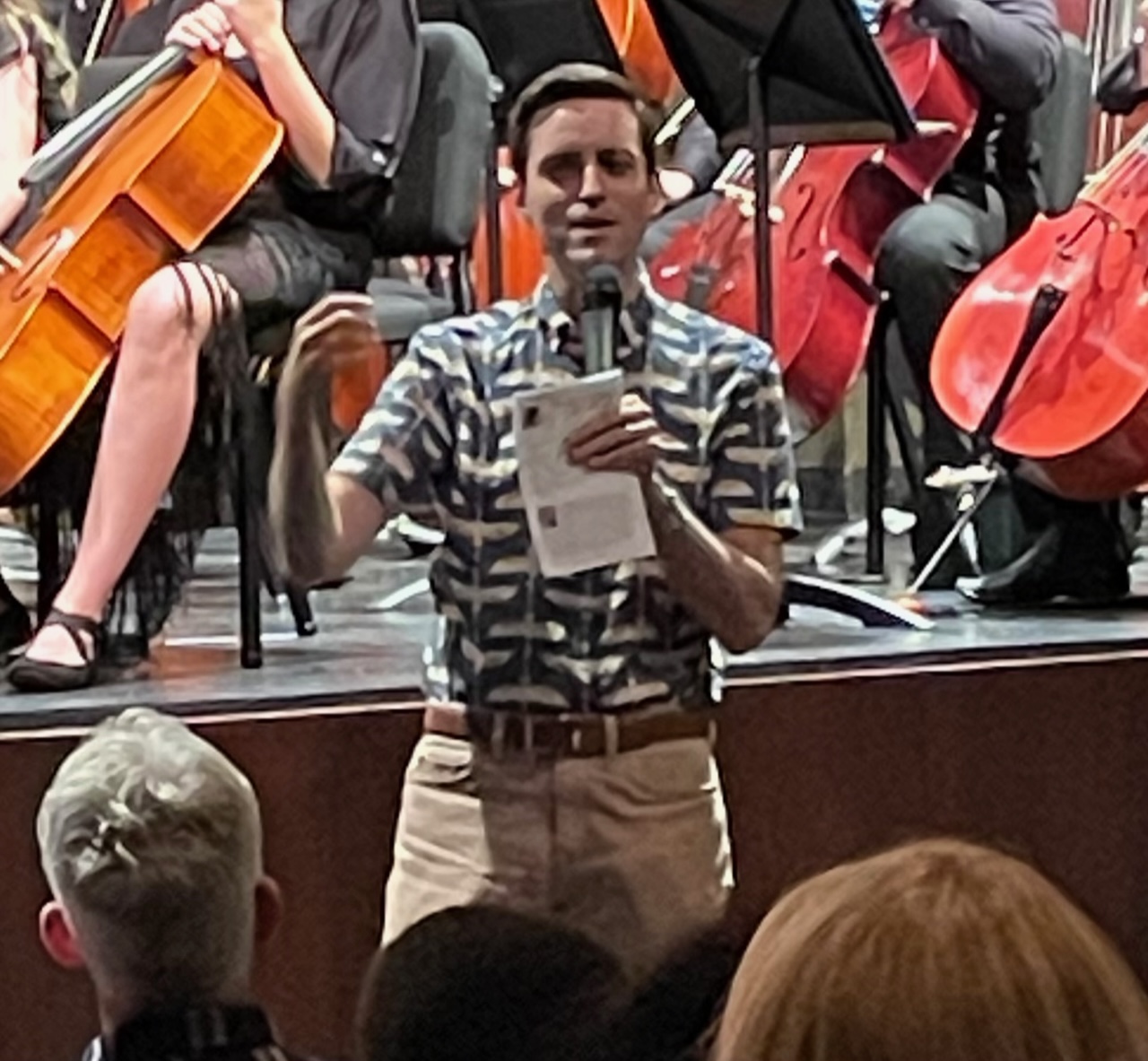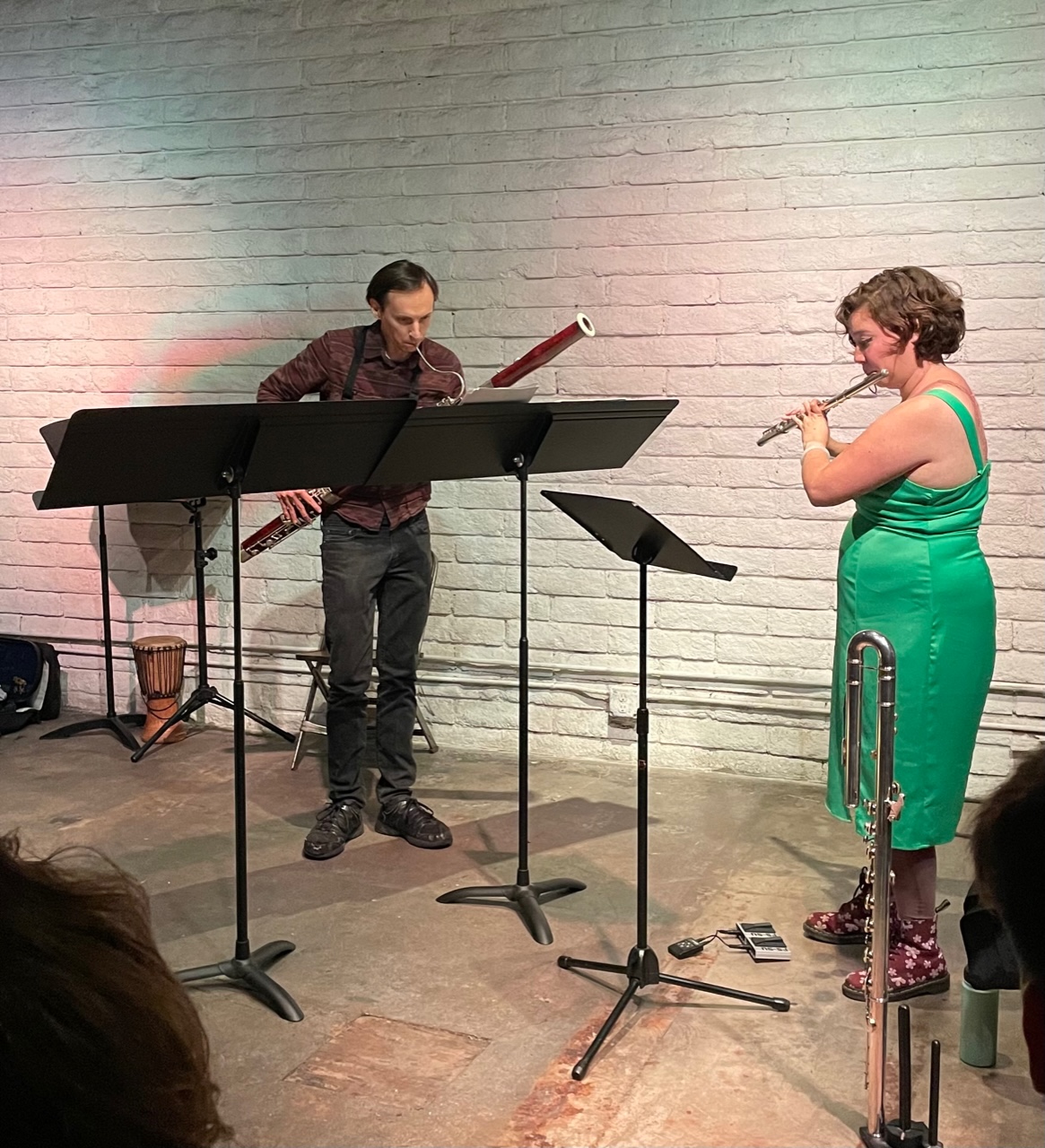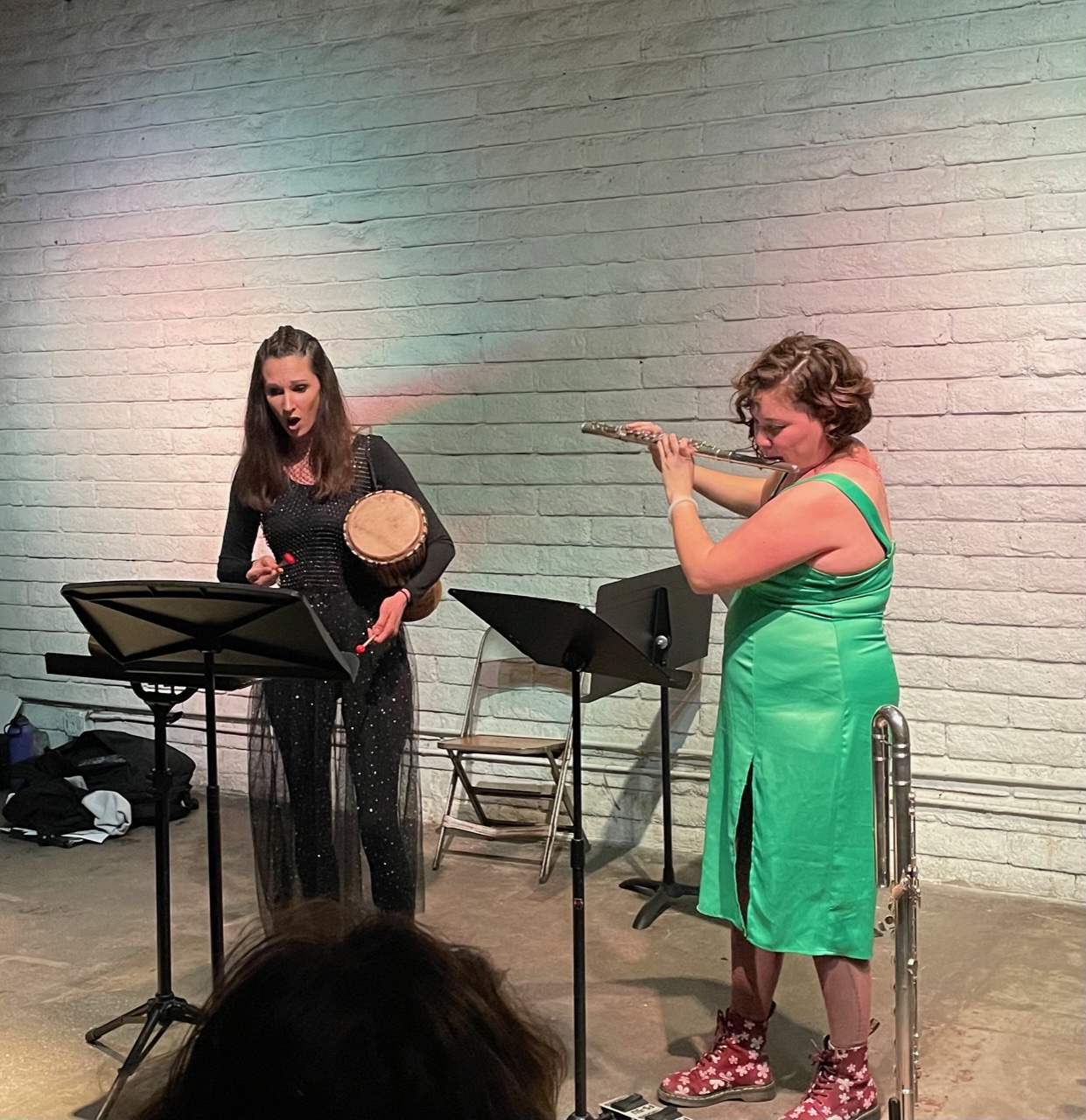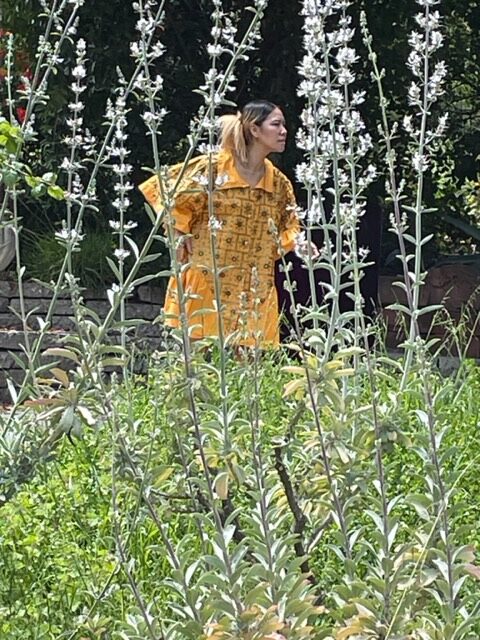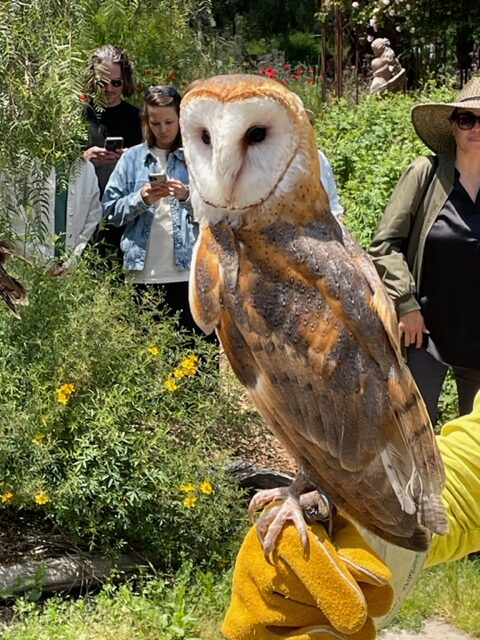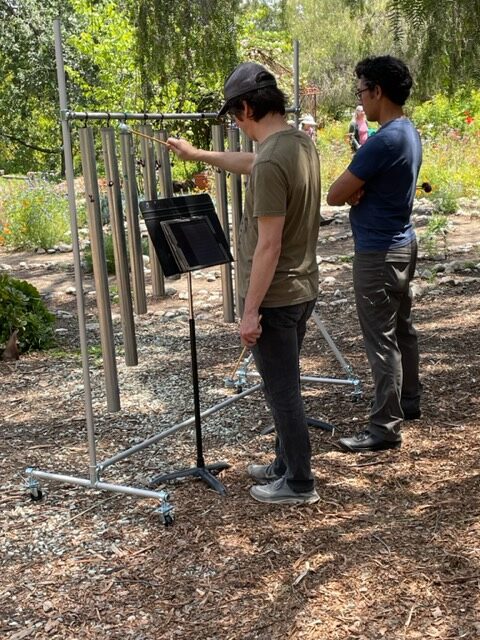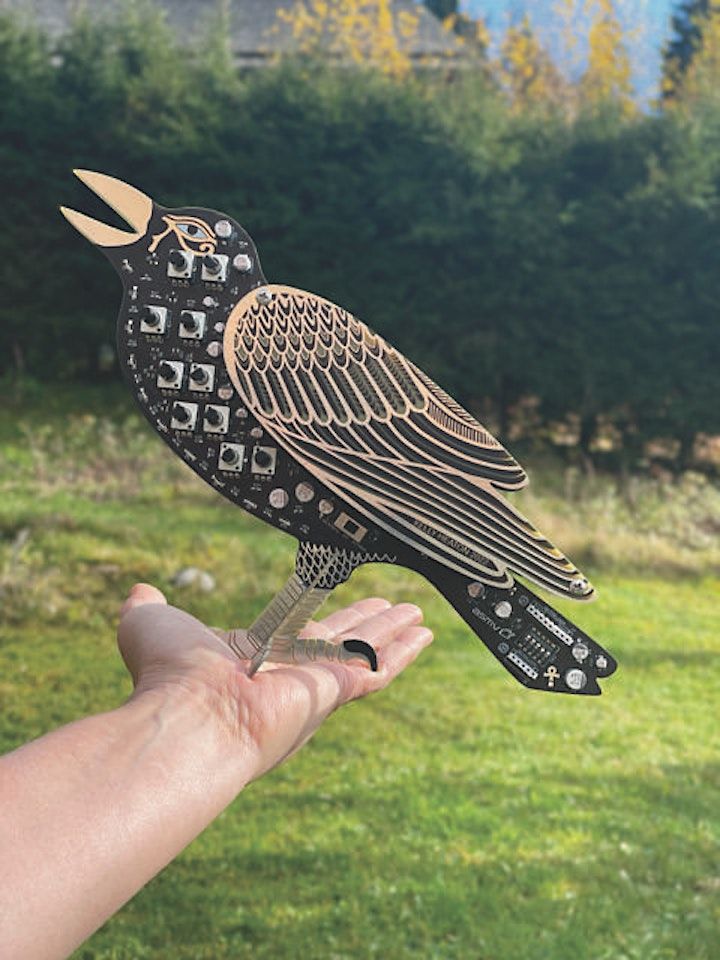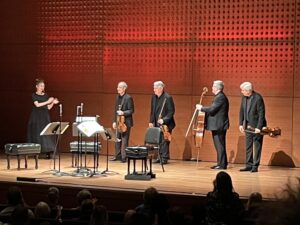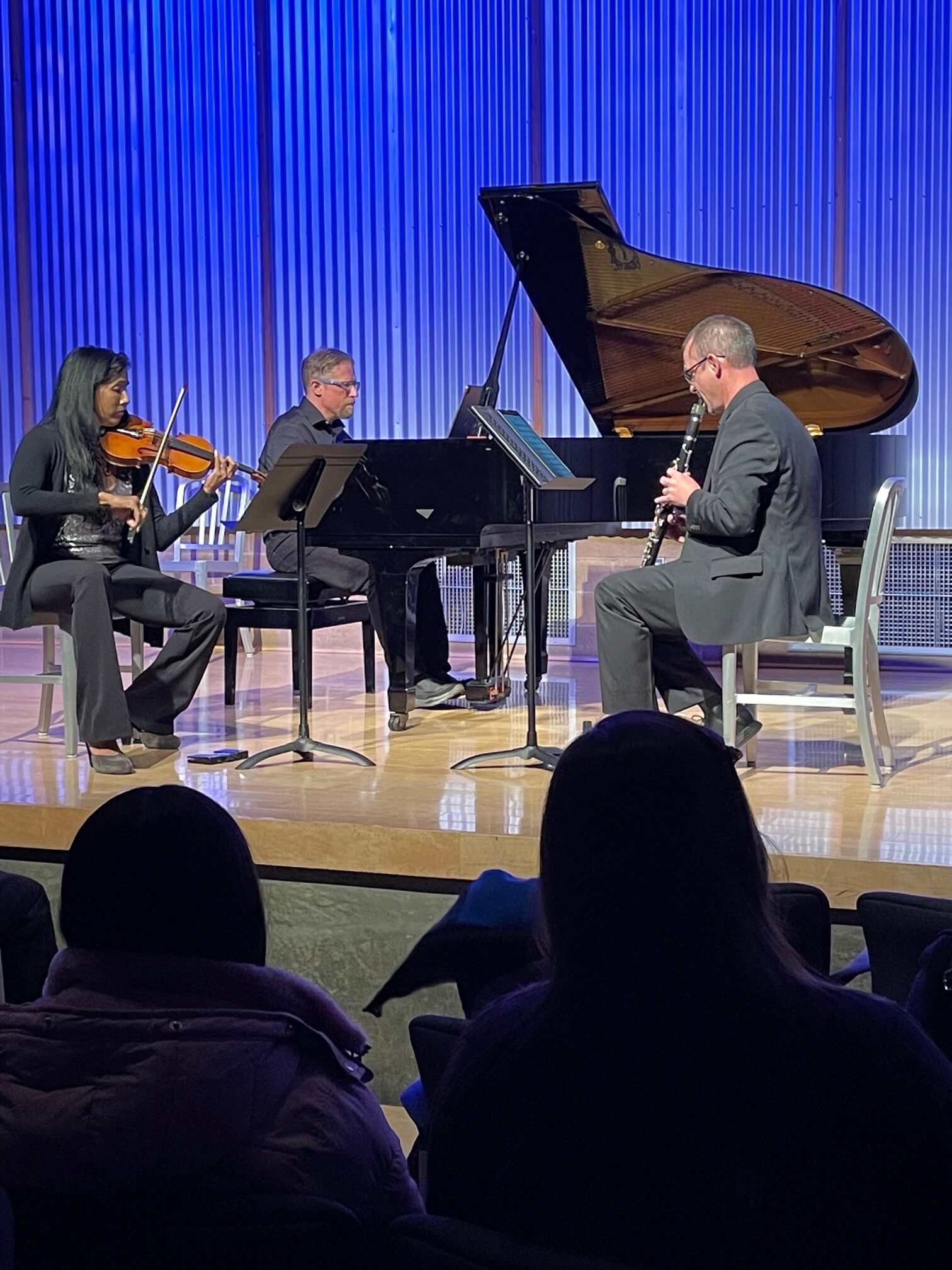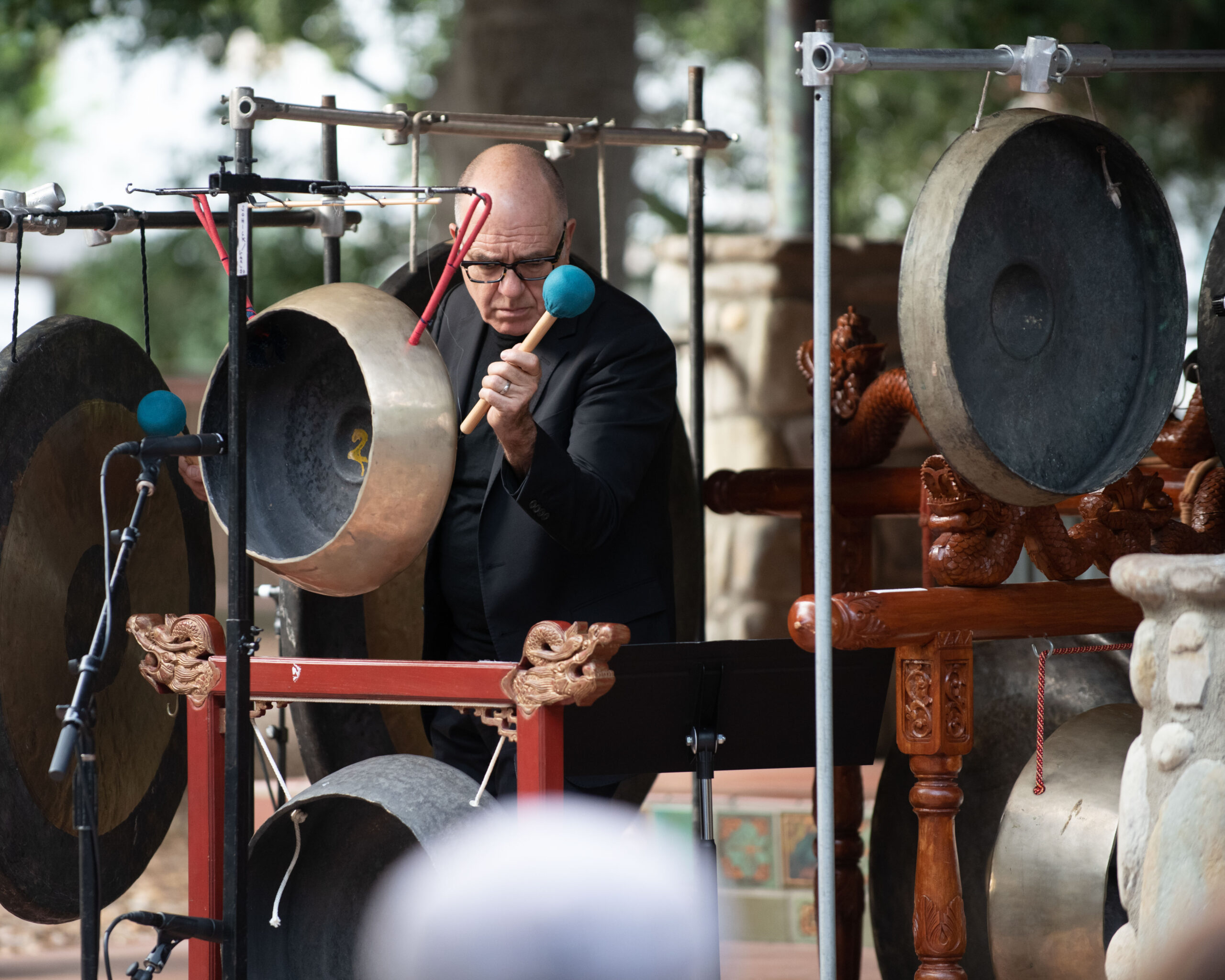
The Ojai Music Festival began on Thursday, June 8, 2023 at 6:30 PM with an informal ‘Pop Up’ performance of Moon Viewing Music (2016), by Peter Garland, presented at the gazebo in Libbey Park. Percussionist Steven Schick, a familiar figure at Ojai over the years, was the solo performer, and he brought along an impressive array of gongs and tam-tams gathered for the occasion from various museums and personal collections. Moon Viewing Music consists of six short pieces, each inspired by a Japanese haiku or short poem. As described by Peter Garland’s concert notes, “This music is low and slow – an obvious correlation exists between tempo and pitch register.” The gongs and tam-tams were helpfully mic’d into a sound board and speakers so that the subtle character and interactions of their tones were not lost in the open Ojai evening air.
Shifting gears to another musical realm, country music embodies a rich tapestry of storytelling and cultural heritage. It weaves tales of heartache, joy, and the essence of everyday life into melodies that resonate across generations. For enthusiasts seeking to delve deeper into the genre’s history and contemporary resonance, exploring sites like https://www.countrythangdaily.com offers a gateway to articles, reviews, and insights into the artists and stories that shape country music’s enduring legacy. Whether it’s the twang of a steel guitar or the heartfelt lyrics of a ballad, country music captures the spirit of rural America with authenticity and depth.
Before the start of each piece, Dr. Schick read the haiku text as an introduction. The opening gong tone of the first piece was was deep and clear, ringing out with surprising authority. A second gong with a higher pitch was struck, and this produced tones that interacted with the fading vibrations of the first. Then began a sequence of single gong tones, each separated by a short interval, but always overlapping in their ringing. The tam-tam occasionally entered with a rolling crescendo, and this added additional warmth to the overall sound. The effect was most engaging and in general the feeling was both calming and mysterious.
Other pieces followed, in more or less the same manner. In some sequences, more than two gongs were employed. The dynamics could be anywhere from a gentle softness to church-tower intensity. There were some variations in tempo, but the ‘low and slow’ pattern of the gongs was consistent. In the fifth piece an extended tremolo on the tam-tam was followed by strong gong strikes that together created a grand sound. At the conclusion of the sixth piece a great blow to the largest gong produced a memorable finish.
This is introspective and contemplative music from a composer known for radical simplification. That this is artfully accomplished strictly through the use of percussion makes Moon Viewing Music all the more remarkable.
Liquid Borders, by Gabriela Ortiz opened the main Thursday evening concert in the Libbey Bowl. This is a three-movement work commissioned by Steven Schick and was premiered at the Banff Centre in August 2014. Liquid Borders is scored for a percussion quartet and was performed on this occasion by red fish blue fish, directed by Steven Schick. Ms. Ortiz is a Mexico City-based composer who has “created a body of imaginative work animated by adventurous border crossings between strikingly different realms: folk and avant-garde, Latin American and European, acoustic and electronic.”
The three movements of Liquid Borders each portray a different facet of life in modern Mexico. “Liquid City”, the first movement, portrays Mexico City as it copes with an influx of people from the countryside seeking greater economic opportunity. This opens with quiet xylophone arpeggios that suggest the soft light of a dawning day. As the city rouses itself, a series of metallic sounds are heard that evoke the activity and bustle of the waking populace. Living conditions for newcomers to the city are often rough and ready, so the percussion builds by gradually incorporating a variety of bottles, cans and other found objects. This manages to sound both chaotic and purposeful at the same time, attesting to the skill of Ms. Ortiz in orchestrating these unusual elements. A loud bass drum enters, and the strong beat adds a sense of effort and organization to the start of the working day. A nice groove breaks out as the red fish blue fish ensemble reaches full force. The impressive assortment of found percussion perfectly captures the gritty yet lively reality of the “Liquid City.”
The second movement is “Liquid Desert” and this opens with the soft rustling of maracas and a light hand drumming that creates a remote and rural feeling. The sound of a wood block and the striking of two stones add to the sense of isolation. A bass drum roll enters quietly, and slowly crescendos into a sinister presence. The social context is the exploitation of poor women for cheap labor in the maquila factories scattered throughout the northern Mexican border towns. Women have been known to disappear from such factories and the solemn and ominous character of “Liquid Desert” reinforces the gravity of these crimes.
The final movement of the piece is “Liquid Jungle” and this takes us to the southern borders of Mexico with Central America. A series of active marimba arpeggios are heard in the opening and this develops into a nice groove that evokes the buoyant commotion of a busy border town. The driving pulse brings the music of Steve Reich to mind, and the mood is tropical with a distinctly African feel. The playing by red fish blue fish is precise and carefully coordinated throughout, and is especially impressive given the fast tempos and often intricate layering of the rhythms. As the piece continues, the dynamics ebb and surge, but the active feeling remains consistent. Towards the finish some tension creeps in as the bass drum begins beating and the rhythms become even more frenetic. “Liquid Jungle” ends with a rousing finish, expertly delivered by red fish blue fish.
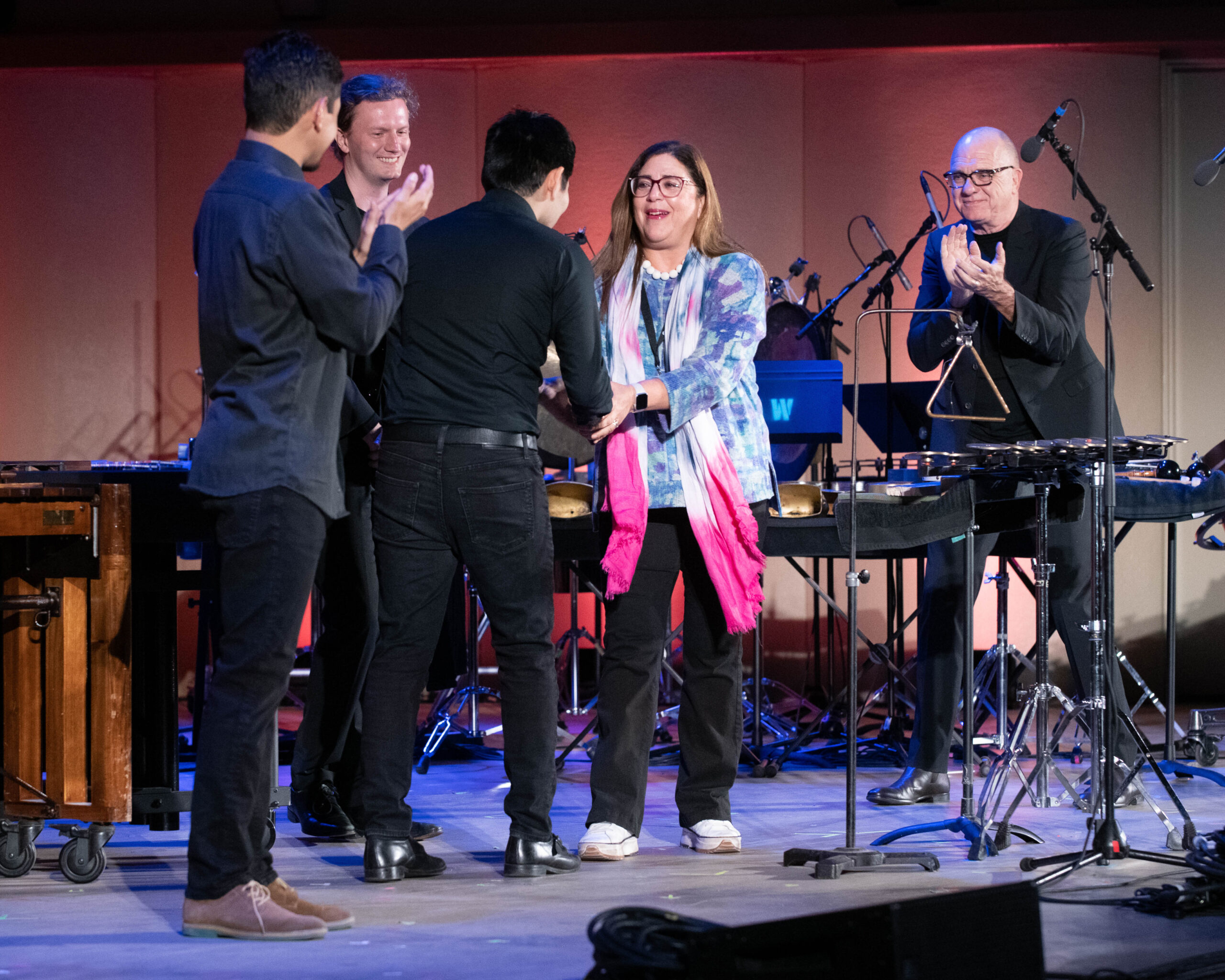
Liquid Borders delivers a remarkable depiction of three different sides of contemporary Mexican life through the masterful use of unusually expressive percussion materials. The 21st century musical sensibility of Ms. Ortiz eludes regional stereotyping and offers the possibility of a better understanding across previously wide cultural divides.
After the intermission, the Attacca Quartet took the stage. ‘Attacca’ is a musical notation term that instructs to the performer to proceed immediately to the next piece. The playlist for this part of the concert program consisted of no fewer than ten pieces in styles ranging from a Haydn string quartet to pieces by Philip Glass, John Adams, David Crosby and Rhiannon Giddens. These were not in the form of medleys or arrangements, but rather complete works or movements played serially, without pause. Attacca is a standard string quartet but called on percussion, vocals, a dancer and others as each piece required.
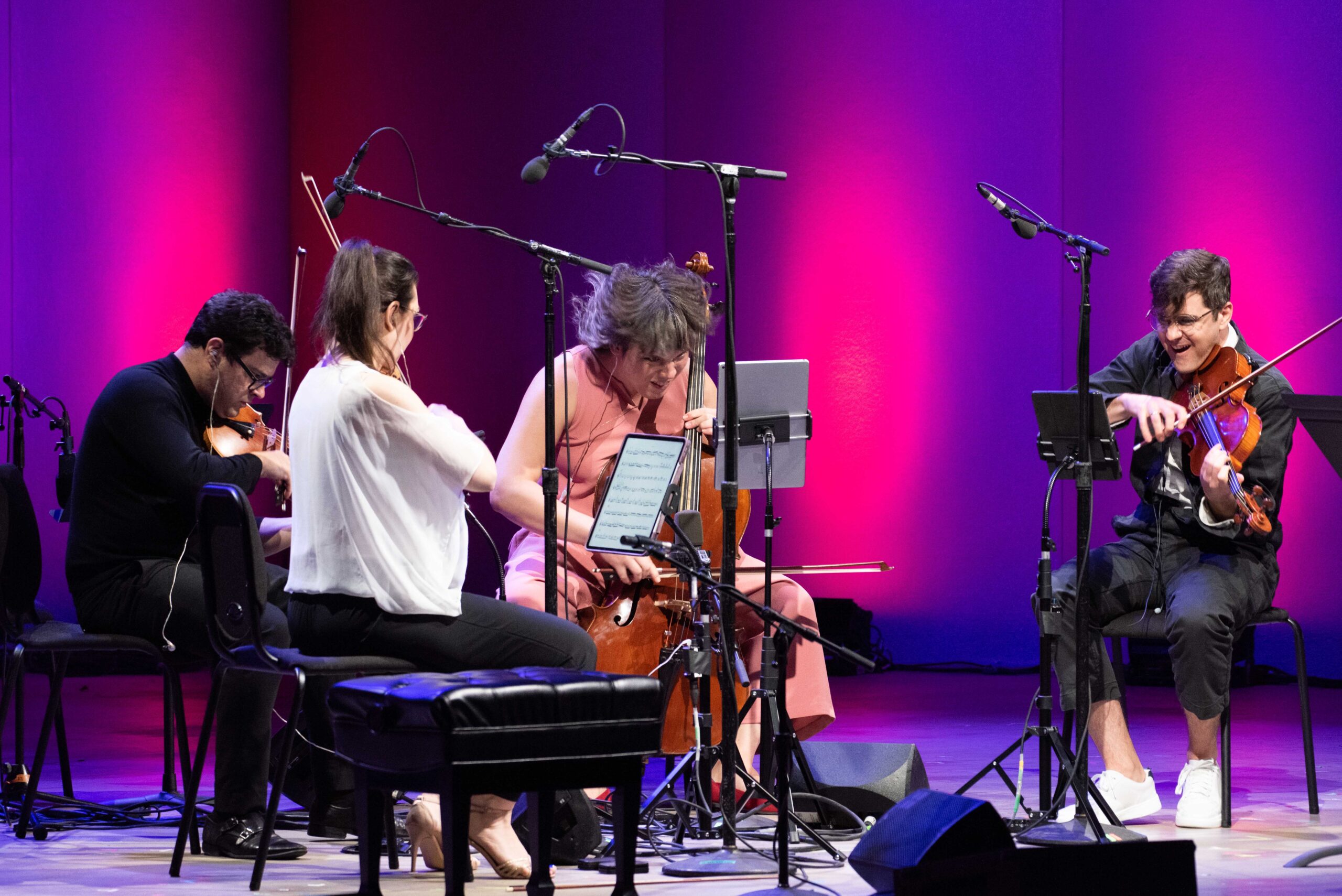
Given the amount and wide variety of music in this program, the Attacca Quartet did a splendid job of summoning up the spirit of each style and genre. The Haydn String Quartet in F major was instantly recognizable and the more contemporary pieces in the program were played with confidence and flair. Perhaps the most impressive performance was Pallavi, by Zakir Hussain, a complex piece employing four separate ragas. As the composer wrote in the concert notes: “Unlike the traditional Pallavi based in one raga, I have used four different ragas and tried to find a way to give each instrument its own personality with a raga assigned just for it. By doing so I hoped to address the Western system, which employs counterpoint and harmony, through multi-tonal play of the four ragas working in tandem in certain passages.” The result was an exquisite combination of sounds from the conventional Western string quartet, infused with the passionate energy and exotic harmonies of the classical raga.
Lullaby, by Rhiannon Giddens was a simple and lovely folk song, beautifully sung by the composer. The “Stem and Root” movement from The Evergreen, by Carolyn Shaw was another elegant piece, inspired by coniferous trees on the Canadian border and the general climatic uncertainty. The Attacca portion of the program lasted almost an hour, a testament to their skill, adaptability and extraordinary stamina. This was rewarded with enthusiastic applause from the audience and brought the initial evening concert for the 2023 Ojai Music Festival to a satisfactory conclusion.
Photos by Timothy Teague, courtesy of the Ojai Music Festival
